650Food is six months old today! If you’ve been following along, you know that I’ve been writing about food — eating, cooking, buying, and growing — in the 650, aka San Francisco’s peninsula neighborhoods. A few weeks ago I wrote, admittedly with a smidge of garden envy, about neighborhood gardens. Well, today my garden envy is gone…over…pfffffttt! While I’ve been encouraging people to “grow local” here (and on Twitter, if you follow me there), I want to tell you that I’m walking the talk. For the first time in many years, I’ve planted a small, edible garden. Hell yeah, I’m excited — I’m growing food! Well, right now they’re just baby plants, but by mid-summer, if all goes well, I’ll have food.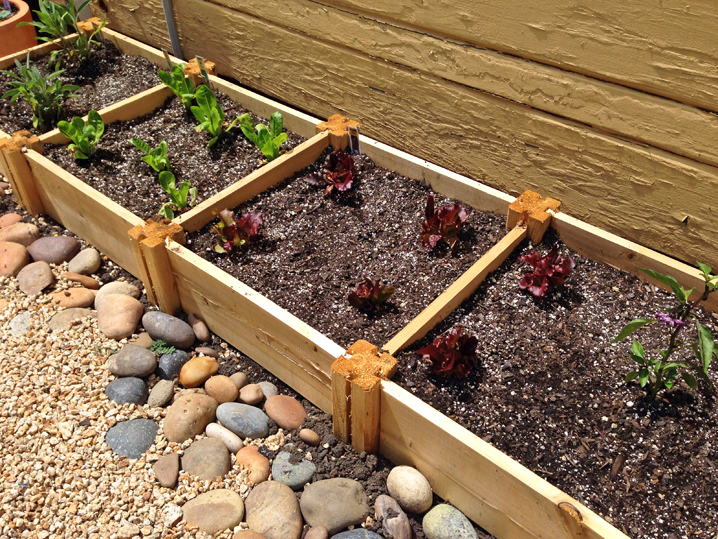
There’s a lot to be said for growing your own food — reconnecting with the outdoors, teaching kids about where food comes from, eating simple, fresh meals — just to name a few reasons. You don’t have to plant an entire farm’s worth of produce, but you can easily get a small kitchen garden going to supplement what you buy weekly at the market. Wondering where to start? Think about the herbs, fruits, and vegetables that you love to eat or can’t find on a regular basis. For me, it started with peppermint and lemon verbena.
While this is not my first edible garden, I’m also not a gardening expert by any means. I definitely did some researching and organizing before I got started. First, I had to figure out where the “full sun” areas are in my yard — those spots that get 6-8 hours of direct sun. Most edibles love full sun — and it’s definitely necessary for fruit, which needs that light and heat to fully develop its sugars. Turns out I don’t have many full-sun spots in my yard, so that limited the garden size and location, right off the bat. (Good thing, too. Because once I got to the nursery to start buying plants, I wanted everything.)
Next I had to decide what I really wanted to grow. Sweet herbs — lavender, lemon verbena, and mint — were at the top of my list. After that I started thinking savory — sage (mmmm, fried sage leaves!) — and spicy, which meant peppers! I love summer salad greens, so if there was room, maybe I would give those a go. And finally, if I could squeeze out one more spot, I wanted just one tomato plant. My neighbor with the tomatoes was already making deals as soon as I mentioned my plans: he’d happily trade his tomatoes and basil for my peppers and mint.
Having picked my spot, I decided that a combination of pots and raised beds would take less time to set up and give me some flexibility in placing what I want to grow. I’m not exactly what you’d call “handy,” so getting pre-made raised beds sounded like a lot more fun than making beds. Fortunately Home Depot had these cedar boxes that just slide together (no tools involved, yay!).

I’d already decided that I wanted my garden to include as many organic components as possible, so here’s where the research really kicked in. I’d waited too long to start plants from seed, so that meant finding a reliable source of quality organic plant starts (baby plants). While the big-box home improvement stores stock a small selection of certified organic plants, you’ll do better to go to a local, independently owned nursery. Typically you’ll find better quality plants and better customer service. (Not to dis the big stores, but sometimes the folks working the garden section don’t know much about gardening. Or they usually work in lumber, or electrical, or plumbing. You get the idea.) A nursery can provide advice on planting, fertilizing, and managing your garden. Two mid-peninsula nurseries that stock organic plants: Wegman’s Nursery in Redwood City and Common Ground in Palo Alto.

Finally, I had to source the soil and fertilizer. This was a tough one, and probably where I spent most of my research time and energy. The large home-improvement stores and small nurseries carry “organic” soil, but you have to read the labels to see what’s really in it. The challenge was finding a brand of organic soil that didn’t contain chicken manure, blood meal, or GMO’s. Unfortunately, most of the companies that use these components can’t or won’t disclose their source, so you don’t know exactly what you’re getting. For example, is the chicken poop in your soil happy, free-range chicken poop, or over-crowded, full-of-antibiotics, just-ate-the-dead-guy-next-to-me chicken poop? I mean, if I’m growing food in it, I want to know.
I ended up choosing Dr. Earth brand, which you can get from Orchard Supply. Dr. Earth is all about no GMO’s, chicken manure, or sewage sludge (who knew that was even an option in soil mixes??). Keeping it in the family, I also went with the Dr. Earth fertilizers.
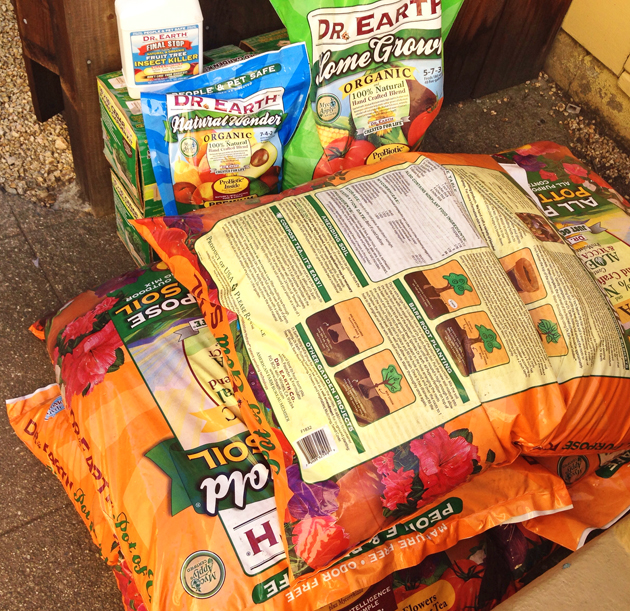
So, I had my raised beds, pots, plants, soil, and fertilizer. All I had to do was wait for a not-too-hot, not-too-cold, not-too-windy day, and I could put it all together. Fortunately Mother Nature cooperated this past weekend, and I was finally able to plant everything (well, almost). Ta-dah! The big reveal…
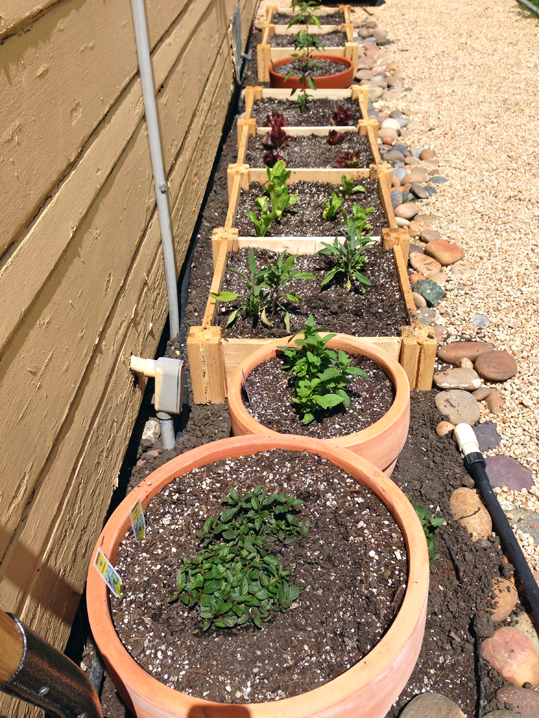
And a few closeups…

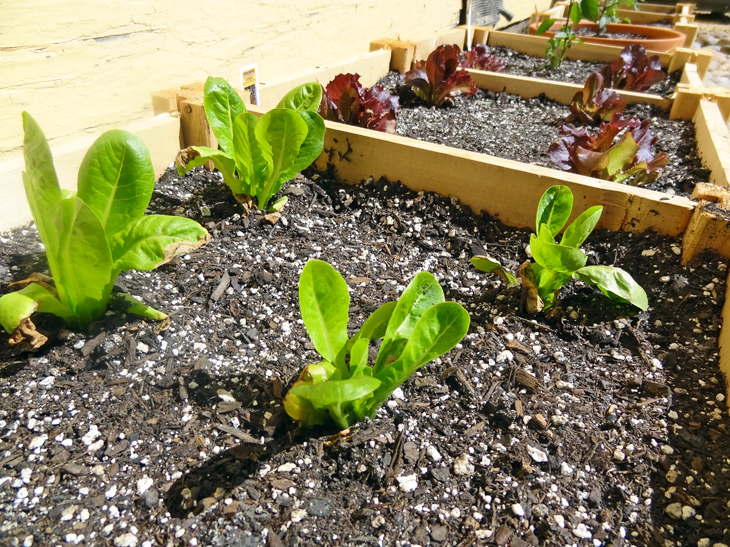
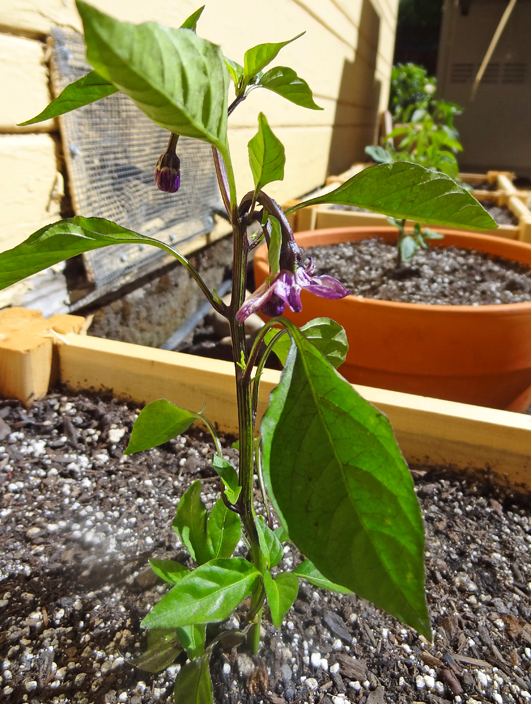
Lavender and lemon verbena ended up in pots on the other side of the yard, where they’ll also benefit from full sun.

Finally, yes, with the lime shortage in mind, I picked up a 5-gallon lime bush (no idea how I’m going to plant this thing). It will go in the sunniest corner of the yard, near the lemon tree.

There you have it: my attempt at a kitchen garden! I’ll try to post updates throughout the season, assuming the squirrels and raccoons behave themselves and stay the f— out. In the meantime, I’m pretty excited about the possibilities of what I might harvest later this summer!
Need help figuring out how to plant an edible garden? Check out this article from Houzz on growing edibles in 16 square feet. My go-to source for figuring out what plants will and won’t thrive in my area is the Sunset Western Garden Guide. (I received my first copy as a gift 20 years ago, and just finally bought the updated version this year.) For more garden and landscaping ideas and growing info specific to the Bay Area, Sunset.com is a helpful resource.
Have you planted a garden? What are you growing this year?
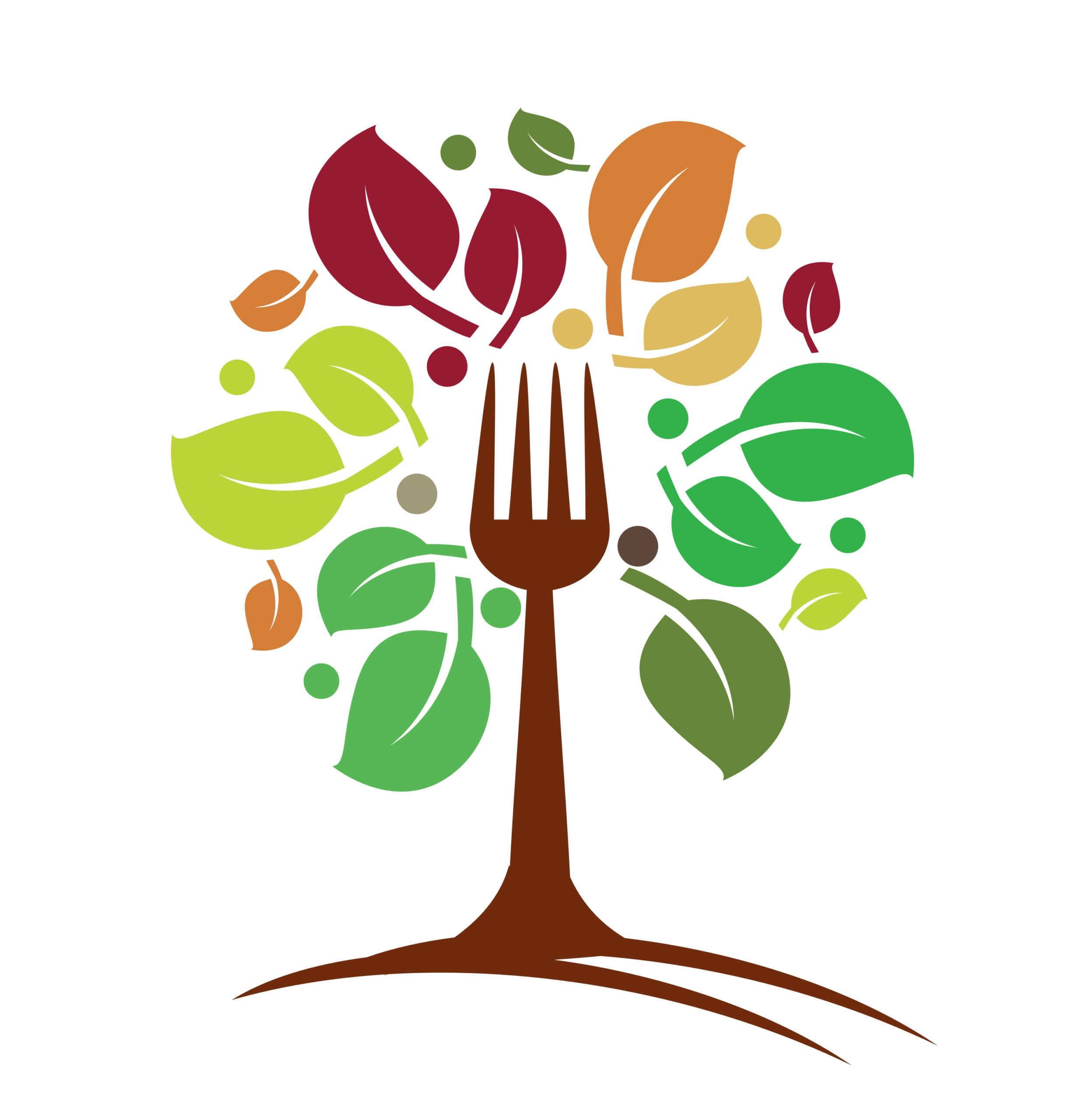

3 thoughts on “Grow Local: In Which I Walk the Talk”